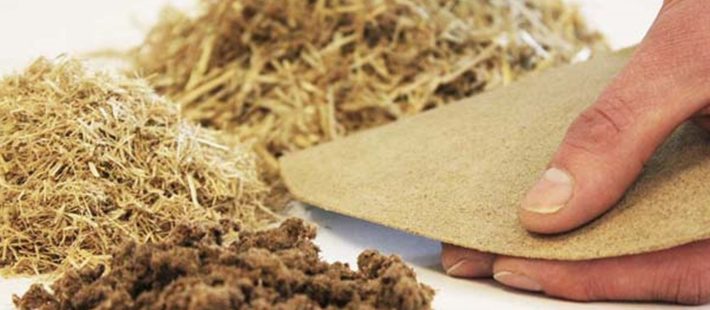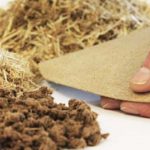The biocomposites attractiveness
The global market is more and more interested in finding alternative materials to plastics in way to reduce CO2 emissions and pollution in general. For this reason, companies look at biocomposites with wood or natural fibres as attractive solutions to replace plastics. In fact, bio-based polymers, plastics and biocomposites can offer more sustainable materials with a lower environmental footprint and reduced carbon footprint. They can also reduce or avoid microplastic emissions in the environment (if a biodegradable plastic matrix is used). Additionally, biocomposites can offer special properties such as higher stiffness and strength. In combination with biodegradable plastics, fully bio-based and biodegradable solutions are possible. A light-weight solution for wood based biocomposites using foaming technology has been developed and even car body parts can be made to replace metal in racing cars.
Not necessary all parts of a biocomposite are bio-based, but the trend is moving into that direction. Meanwhile, there are a lot of bio-based polymers on the market to produce partly or fully bio-based composites, to use renewable carbon instead of fossil carbon. Some are biodegradable in certain environments. In combination with biodegradable plastics, biocomposites are optimal for use in agriculture, horticulture and for special applications such as filter balls and coffee capsules.
Different applications for biocomposites
In fact, thanks to the latest advances in injection moulding and 3D printing, there are now several applications for wood plastic composites (WPC) and natural fibre composites (NFC). Also, in the consumer goods market: wood and natural fibre plastic granulates are being used such as music instruments, casing and cases, furniture, tables, toys, combs and trays. The unique look and touch convey high quality and value and are well received by customers. For example, the use of hemp is very appreciated because it is one of the strongest natural fibres in the world, which makes the products strong, light and durable.
Plastic packaging and biocomposites
An important area for bio-based polymers application is packaging: bio-based polymers do not differ optically from petro-based plastics. In combination with natural fibres, they offer excellent possibilities for Eco marketing, especially in biocosmetic cans or packaging for bio-based detergents. The natural fibres reduce the share of (bio)plastics, improve properties and offer a unique haptic and optic.
Automotive and biocomposites
Biocomposites are key materials also in the automotive sector. They are primarily used for saving weight in car interiors. Especially small, new car producers are looking for ecological lightweight materials with low carbon footprint, which can certainly be provided by biocomposites. But we also see ongoing demand in the established automotive industry.
Developments in biocomposites market for construction
Finally, the request for biocomposites materials increases also in construction market – the established field of use of biocomposites. Wood-plastic composite (WPC) decking and railing were first developed in North America as a good way of recycling wood and plastics in the 1980s, and they created the greatest demand for WPC materials in decking applications throughout the world. In relative terms, WPC is still in its development life cycle and has a long potential to develop, yet that development appears to have slowed significantly since the product has reached a mature market stage in North America, as well as in Europe. But the market presence of larger producers from Europe and imports from the USA and China is still increasing.












